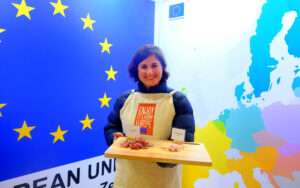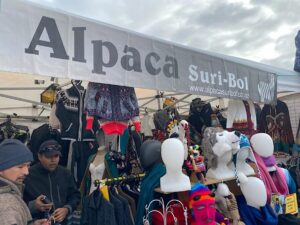Great Indoors 4
Kingsley Field recalls the interesting people he met at Fieldays.
–
“You must meet a lot of interesting people,” said the young bank officer.
We were breakfasting in the 7am half-light of the third day of the National Fieldays, and the big food tent was awash with exhibitor-stand staff all stoking up in readiness for another busy day. Most of the large 10-seater tables were full of men and women in little groups, each gathering dressed in similar jackets or shirts or other garments, easily identifying them as belonging to a specific exhibition site.
I sought out a seat away from the shimmering gas heaters, and set down my piled fat-breakfast plate along with the cutlery. The young bank man greeted me affably, asked whether I was at the Fieldays for the duration or just a day visitor, and then with well-honed business-prospect skills asked what I did. We fell to talking about what writers did at such an event, and as well we discussed how the Fieldays was impacting on the banking industry this year.
He grimaced a little and shook his head slightly: “Yeah, well, it’s doing all right, but I think we’re down somewhat on last year,” he said. “Not so many people coming in to discuss things. You must meet a lot of interesting people.”
And he was right. It’s one of the pleasures of being a journalist and writer – the craft gives those in it a sort of unascribed right to approach complete strangers and start asking a raft of pointed and sometimes personal questions. It’s a learned art, and the Fieldays is one of the best places to practice it.
Initially one doesn’t have to confess to being a beaky journalist. It’s very easy to engage someone on a sales stand in conversation – invariably they’re keen to talk, to expound on the virtues of their products, to snigger at politicians, and to discuss the weather and the world in general. Then, usually, they’re also happy to “go on record”, and out pours yet another good story.
At lunch yesterday, three of us older journos were dining pleasantly, and conversation with a couple of plastic piping salesmen beside us was soon sparking. They sold their pipe around the world, particularly into South America for irrigation purposes. They were happy to have their photo taken for publication, and readily supplied names and company details. So too did four Chinese from an exhibition stand not far from the lunch tent, and they smiled happily in front of the camera, and complimented us on the tastiness of our New Zealand food as they hoed in to heaped plates of roasted potato and sturdy slabs of warm ham fresh-sliced from the bone.
Then Max joined us. He’d caught our eye when he strode into the hall and bought a mug of coffee. He cast about for a seat and we waved him over. Wearing a massive-brimmed straw hat and with a weather-beaten face that showed all his 87 years, he was, one of us reckoned, possibly the first man on earth to discover Ayer’s Rock.
That’s as maybe, but he was certainly an interesting character: a retired Pio Pio back-country sheep and beef farmer, now living in Hamilton and with a longtime family bach at Kawhia. He was glad to sit for 30 minutes and talk farming and golf and fishing, and to boast quietly of the exploits of his children and grandchildren.
You do, indeed, meet a lot of interesting people at the National Fieldays. It is one of the many reasons it’s always such a success.




